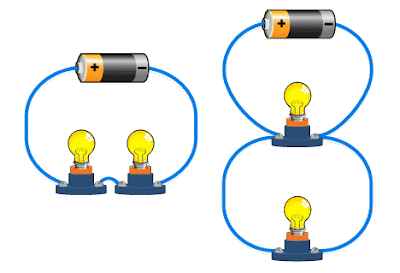Answers to Kepler questions, Newton's laws questions and answers
Homework answers
1. Discuss each of Kepler's 3 laws.
1. Discuss each of Kepler's 3 laws.
See notes.
2. At what point in its orbit is the Earth closest to the Sun?
Perihelion, which is approximately January 3-4 each year.
3. What causes seasons?
Tilt of Earth's axis.
4. What is a semi-major axis of orbit (a)?
Half the longest distance across the orbital path (ellipse).
5. What is an Astronomical Unit (AU)?
Defined as the semi-major axis of Earth's orbit - roughly 93,000,000 miles - or half the longest width across Earth's orbit. It is close to the average distance of Earth from the Sun.
New homework (not to collect)
2. A 0.5 kg toy car is pushed with a 40 newton force. What is the car's acceleration?
3. Without calculating anything, what would be the effect (in problem 2) of increasing the mass of the car?
4. Give an example of Newton's 1st law in action.
5. Give an example of Newton's 3rd law in action.
6. Newton's "big book", what I claim is the most important non-religious book of all time is _____ and was published in _____.
7. What are epicycles and why are they important in the history of science?
8. Distinguish between weight and mass.
9. What is the SI unit of force? What is the English unit of force?
10. How does weight depend on gravitational acceleration?
11. Freefall review. Consider a ball falling from rest. How fast would it be moving after 4 seconds? How far would it fall in this time?
>
Answers to the above Newton problems:
1. See notes.
2. F = m a
Therefore, a = F/m
40 / 0.5 = 80 m/s/s
3. lower acceleration
4. See notes. Tablecloth pull, etc.
5. firearm recoil, etc.
6. Principia Mathematica, 1687.
7. They helped explain retrograde motion - the apparent backwards motion of planets. Really, planets are orbiting the Sun and there are times that some bodies are "behind" -- it's like when you pass someone on the highway and they "appear" to be moving backwards at that time.
8. mass - the amount of stuff (in kg); weight - the gravitational pull on this stuff (in newtons), calculated using W = mg. The weight depends on where you are (in terms of how the gravitational acceleration changes). For example, your weight on the Moon is 1/6 that of Earth.
9. newton; pound
10. W = m g. Weight is depending on the local value of g.
11. Letting g = 10 m/s/s --> 40 m/s, 80 m
A few more problems to play with:
1. Consider Jupiter. It's orbit is 5 AU in size (roughly). How long should it take Jupiter to orbit the Sun once? Show how this calculation would be done.
2. A 10-kg object is pushed on by a 200-N force. What will be the acceleration?
3. What is the weight of a 100-kg man?
4. Would the answer to 3 be different if he was on the moon? How so?
5. (Challenge question.) Consider yourself standing on a scale in an elevator. The scale reads your weight. Compared to being at rest, how would the scale reading change (if at all) if the elevator were:
A. Moving with constant velocity upward
B. moving with constant velocity downward
C. Moving with constant acceleration upward
D. Moving with constant acceleration downward
E. If the cable snapped (yikes!) and the elevator were falling
Answers to these:
1. Consider Jupiter. It's orbit is 5 AU in size (roughly). How long should it take Jupiter to orbit the Sun once? Show how this calculation would be done.
5^3 = T^2
So, T = the square root of 125, or around 11 years.
2. F = m a
200 = 10 a
a = 20 m/s/s
3. W = m g
W = 100 g = 980 newtons
4. Yes. The weight would be smaller (1/6 as much, since Moon surface gravity is 1/6 that of Earth).
5. a. your regular weight
b. your regular weight
c. greater than your regular weight
d. less than your regular weight
e. zero! (meaning that you are "weightless")



Comments
Post a Comment